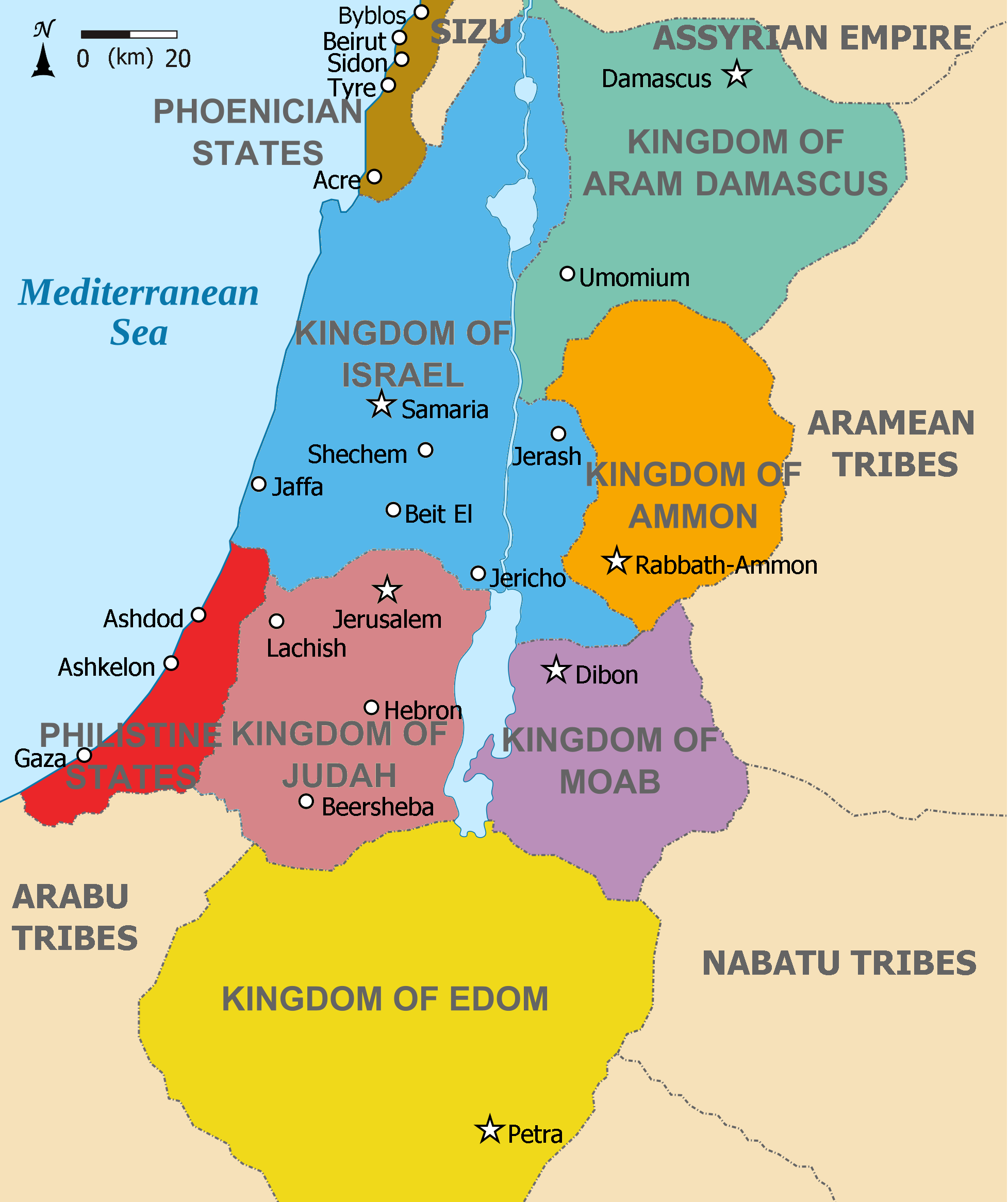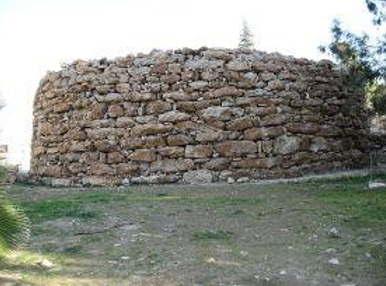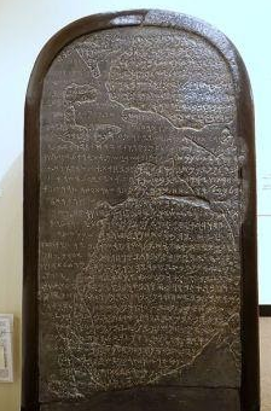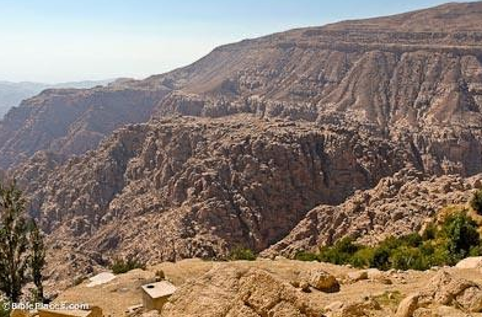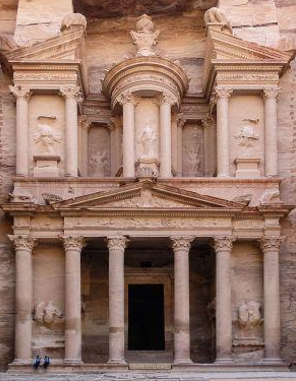King Jehu was a man who had served for years as a commander in the army of Israel (2 Kings 9:5), and was infamous for the ferocious way he drove his chariot (2 Kings 9:20). One day, while in a council of war, a prophet arrived and anointed him king of Israel, and gave him a message from the Lord: “You shall strike down the house of Ahab your master, so that I may avenge on Jezebel the blood of my servants the prophets, and the blood of all the servants of the LORD” (2 Kings 9:7). In the bloody coup that followed, Jehu killed Joram, king of Israel, Ahaziah, king of Judah, and Jezebel, the Queen mother. He further arranged for the murder of “all who remained of the house of Ahab in Jezreel, all his great men and his close friends and his priests, until he left him none remaining.” (2 Kings 10:11). Then, Jehu deceitfully called for a solemn assembly for Baal, at which he slaughtered the prophets, priests and worshipers, and demolished the temple of Baal. (2 Kings 10:25-27). Having secured the throne, Jehu reigned over Israel for 28 years from ca. 841-814 BC.1
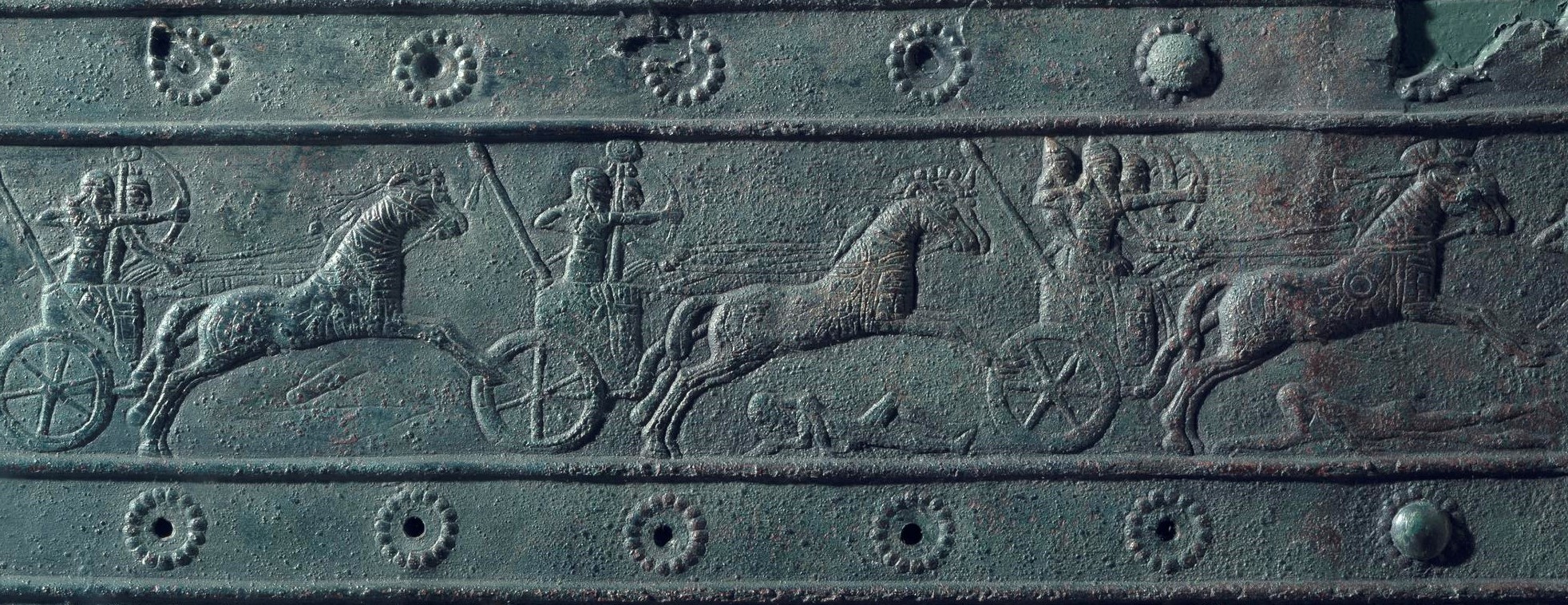 Credit: © The Trustees of the British Museum | CC BY-NC-SA 4.0
Credit: © The Trustees of the British Museum | CC BY-NC-SA 4.0
Jehu likely drove a chariot similar to these Assyrian chariots pictured on the Balawat Gates of Shalmaneser III, which date to the same time period.
Jehu’s Reign at Samaria
Like the Israelite kings of Israel before him, Jehu reigned over Israel from Samaria (2 Kings 10:36). Omri had moved the Israelite capital from Tirzah to Samaria and built a palace at the top of the hill he had purchased from Shemer (1 Kings 16:24). Parts of this palace were excavated by the Harvard Expedition (1908-1910). The original structure was later expanded, possibly by Omri’s son, although recent scholarship has suggested that some of the renovations previously associated with Ahab should be attributed to Jehu.2 Having reigned in Samaria for close to three decades, he no doubt would have made changes to the architecture of the site as evidence of his power. Much of the original Israelite architecture was erased when Herod the Great built a temple to Augustus on the acropolis.
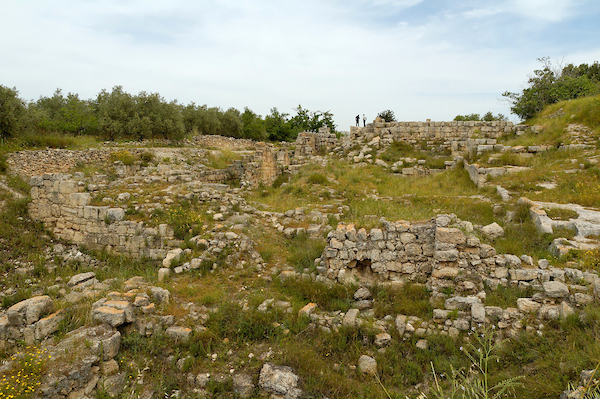 Credit: Todd Bolen | BiblePlaces.com
Credit: Todd Bolen | BiblePlaces.com
The Iron Age ruins of the Israelite palace on the acropolis at Samaria.
Jehu’s Destruction of Baal
Jehu’s “zeal for the LORD” (2 Kings 10:16) began well, with his destruction of the cult of Baal. Jehu’s predecessor, King Ahab, had “set up an altar for Baal in the temple of Baal that he built in Samaria.” (1 Kings 16:32). In 2 Kings 10:27 we read that Jehu “demolished the pillar of Baal, and demolished the house of Baal, and made it a latrine to this day.”
No evidence of the Temple of Baal was discovered by either of the teams that excavated Samaria, but the site was not fully explored. It makes sense that the Temple would have been located on the acropolis, as ancient temples were often located on the highest point of a site. However, the eastern half of the acropolis has never been excavated.3
The practice of desecrating a holy site by setting up a toilet in it is attested in antiquity. While conclusive evidence of Jehu’s destruction of Baal worship has yet to be unearthed, evidence of Hezekiah’s religious reforms was discovered at Lachish in 2016. There, a gate-shrine was discovered, along with two four-horned altars that had their horns intentionally broken off. Within the shrine, excavators also found a toilet – evidence of intentional desecration.4 Based on the biblical description, Jehu did something similar at the temple of Baal at Samaria.
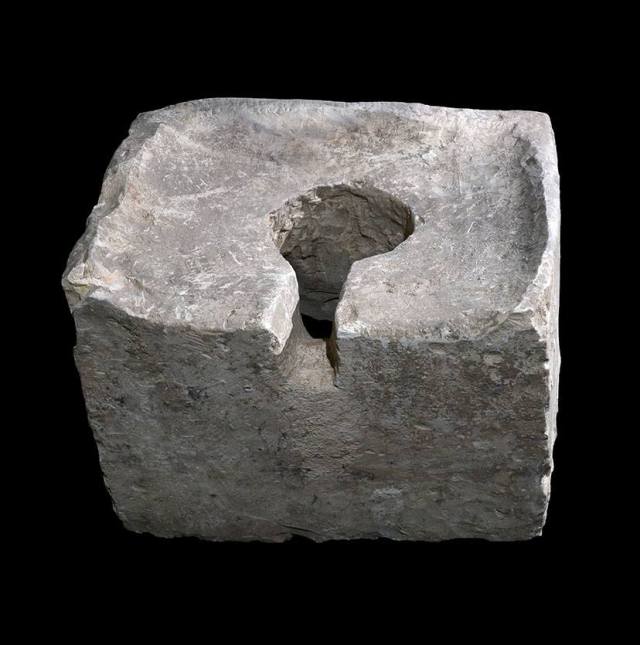 Credit: Israel Antiquities Authority
Credit: Israel Antiquities Authority
An Iron Age toilet discovered at Lachish in a desecrated gate shrine.
Jehu in Assyrian Inscriptions
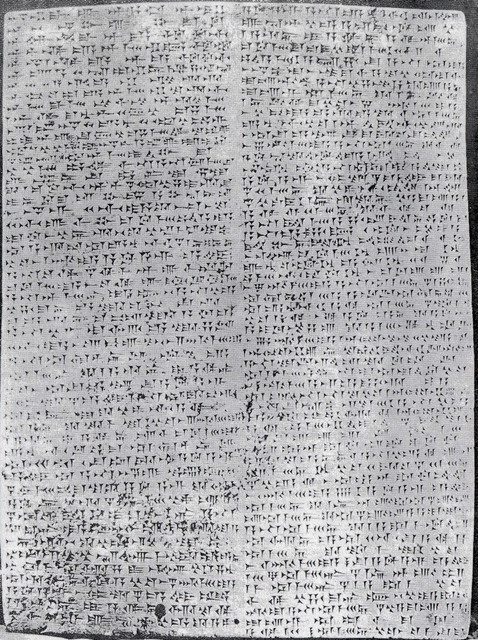 Credit: Ardon Bar-Hama
Credit: Ardon Bar-Hama
The Marble Slab Inscription from Ashur contains the Annals of Shalmaneser III and record the tribute he received from King Jehu.
Jehu’s reign corresponded with that of Shalmaneser III, and he is mentioned in numerous Assyrian inscriptions.
One of the longest versions of Shalmaneser III’s annals was discovered on a large stone tablet in the wall of the city of Ashur. It records the various campaigns he took through the first 21 years of his reign.5 In his 18th year, Shalmaneser describes how he crossed the Euphrates river to defeat Hazael of Damascus. In addition to this victory, he wrote, “I received tribute from Ba’ali-manzeri of Tyre and from Jehu of the house of Omri.”6 Other copies of Shalmaneser’s annals have been discovered with the same description of Jehu’s tribute. These include inscriptions on two monumental bulls discovered at Nimrud (ancient Calah),7 in an annalistic tablet,8 as well as on the Kurba’il stature of Shalmaneser III.9 This statue was discovered at Fort Shalmaneser, but appears to have been dedicated to the god Adad at Kurba’il.
The most famous inscription naming Jehu is recorded on the Black Obelisk of Shalmaneser III. This black alabaster monument was discovered in the central building at Nimrud by archaeologist Sir Austen Henry Layard in 1846. It records Shalmaneser III’s military achievements throughout the first 31 years of his reign and includes reliefs of the tributes that were paid by five of the regions that he conquered.10 The inscription over one of these reliefs reads, “Tribute of Jehu, son of Omri. Silver, gold, a golden bowl, a golden beaker, golden goblets, pitchers of gold, lead, staves for the hand of the king, javelins, I received from him.”11 This relief contains an image of Shalmaneser III receiving this tribute from a prostrate figure. Many scholars believe this to be an image of King Jehu. Archaeologist, Dr. Bryant Wood explains the image:
The Black Obelisk represents the only possible likeness of a king of Israel or Judah. All 14 of the Israelites are bearded, have long hair and wear a pointed cap. They also wear a belted tunic that has a fringe at the bottom. In addition, the Israelite porters wear a mantle or cloak over the tunic that extends over the shoulders and is fringed or tasseled down the front on both sides. The kneeling figure, however, does not wear the outer cloak. His position before Shalmaneser may explain its absence. He is bowing in obeisance on his hands and knees before the Assyrian king with his chin and beard towards the ground. As a part of this humiliation, it seems that he had to remove his outer garment, thus forcing him to bow before the emperor of the world in what amounts to his underwear!12
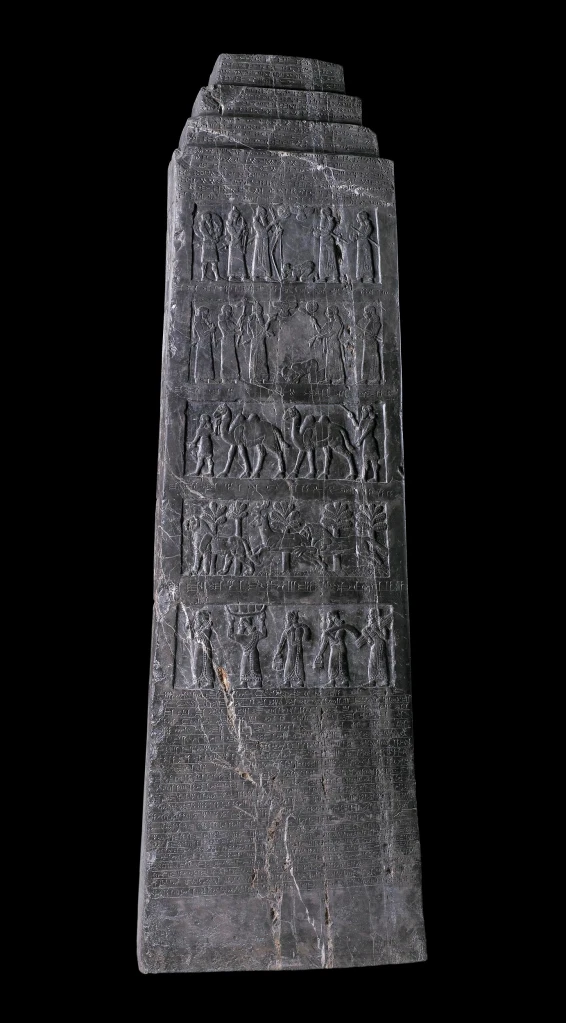 Credit: © The Trustees of the British Museum | CC BY-NC-SA 4.0
Credit: © The Trustees of the British Museum | CC BY-NC-SA 4.0
The Black Obelisk of Shalmaneser III contains a record of the tribute he received from King Jehu, and may contain an image of his likeness.
It should be noted that, in Assyrian records, Jehu is often associated with the “house of Omri” or described as the “son of Omri.” Jehu was not a descendant of Omri; rather he was the successor to the Omride dynasty. The Assyrians often referred to successive rulers in relation to the name of the ruler of the country with whom they had first contact.13
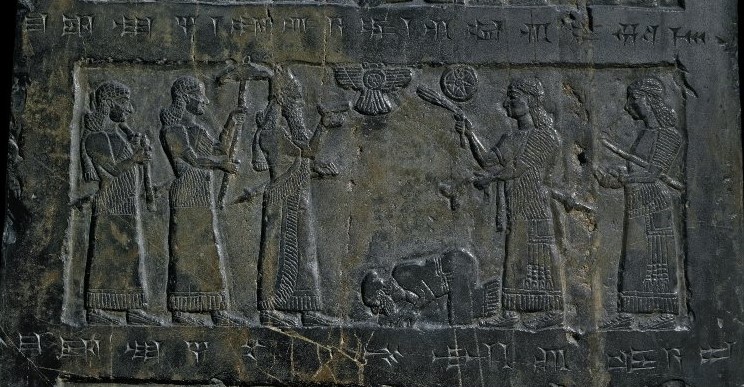 Credit: © The Trustees of the British Museum | CC BY-NC-SA 4.0
Credit: © The Trustees of the British Museum | CC BY-NC-SA 4.0
The inscription on this panel of the Black Obelisk of Shalmaneser III reads, “The tribute of Jehu, son of Omri…” It likely depicts King Jehu prostrate before Shalmaneser III.
Jehu in his World
These Assyrian inscriptions date Jehu’s tribute to the 18th year of Shalmaneser III (841 BC), the year in which he began his reign. While this event is not recorded in Scripture, it would be consistent with the biblical description of the political world in which Jehu rose to power.
More than a decade earlier, Hadadezer, the Aramean king of Damascus, and a coalition of forces, including Ahab, king of Israel and his 2000 chariots, fought against Shalmaneser III at the Battle of Qarqar. This event is described on the Kurkh Monolith of Shalmaneser III. As a chariot commander, Jehu likely fought in that battle (2 Kings 9:25) along side his Aramean allies.
Sometime after this, Israel and Aram became foes, as Ahab’s son, Joram allied himself with Ahaziah, king of Judah and went to battle against Hazael, the new king at Damascus (2 Kings 8:28).
Shalmaneser’s annals record that, in 841 BC, he again came to fight against the Arameans: “Hazael of Damascus put his trust upon his numerous army and called up his troops in great number…I fought with him and inflicted a defeat upon him, killing with the sword 16,000 of his experienced soldiers. I took away from him 1211 chariots, 470 riding horses as well as his camp. He disappeared to save his life (but) I followed him and besieged him in Damascus (Di-mas-qi), his royal residence…. I received tribute from Ba’ali-manzeri of Tyre and from Jehu of the house of Omri.”14
Jehu, who had recently claimed the throne in Israel aligned himself with Assyria, rather than his old ally – now foe, Aram-Damascus. Thus, Jehu paid tribute to Assyria, and became a vassal to Shalmaneser III, as recorded in the Assyrian records.
This helps explain the biblical comment about hostility with Hazael throughout Jehu’s reign: “But Jehu was not careful to walk in the law of the LORD, the God of Israel, with all his heart. He did not turn from the sins of Jeroboam, which he made Israel to sin. In those days the LORD began to cut off parts of Israel. Hazael defeated them throughout the territory of Israel…” (2 Kings 10:31-33).
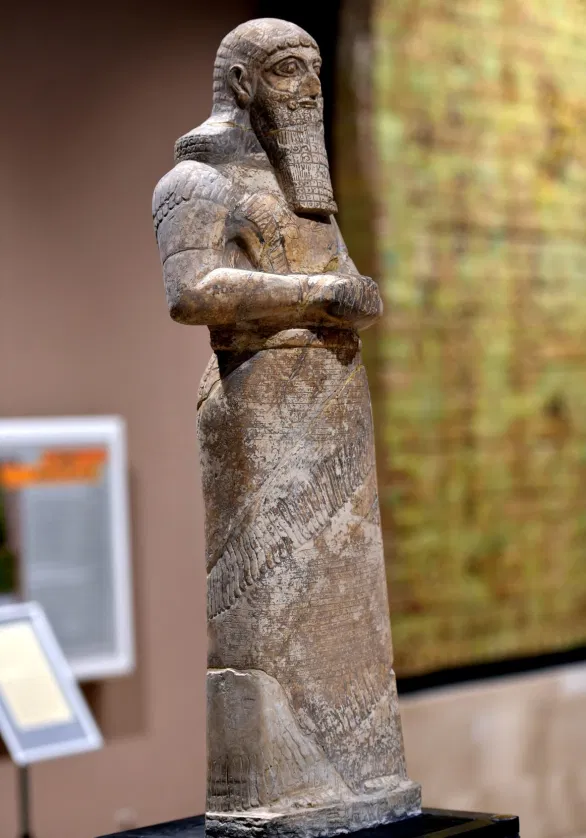 Credit: Wikimedia Commons | Osama Shukir Muhammed Amin | CC BY-NC-SA 4.0
Credit: Wikimedia Commons | Osama Shukir Muhammed Amin | CC BY-NC-SA 4.0
Engraved on the the Kurba’il Statue of Shalmaneser III is a record his victory over Hazael, the Aramean King of Damascus, as well as King Jehu’s tribute.
Jehu and the Tel Dan
Finally, we should make note of the Tel Dan Inscription and how it relates to Jehu. While this stele is most often used to highlight the historicity of David (and rightly so!), it appears to be referencing the historical situation at the time of Jehu and was likely written by Hazael, King of Aram. Kenneth Kitchen provides the following reconstruction of the fragmentary inscription:
[And I killed? xxx]ram, son of [xxxx], king of Israel.
And [I] killed [xxx]iah, son of [xxxx.xx]? the house of David15
Kitchen goes on to note, “In the whole series of the kings of Irsael, there is one and only one king whose name ends in -ram, and that is J(eh)oram, son of Ahab…in strict parallel with the sentence about [Jeho]ram of Israel, we have another that our Aramean king killed “[xxx]iah, son of [X],” plus mention of the House of David = Judah…it is extremely likely that we should further restore “[Ahaz]iah son of [Joram] [king of] the house of David.”16 Thus, most scholars interpret the Tel Dan Inscription as a victory stele of Hazael, King of Aram, claiming to have killed Joram, king of Israel and Ahaziah, king of Judah.
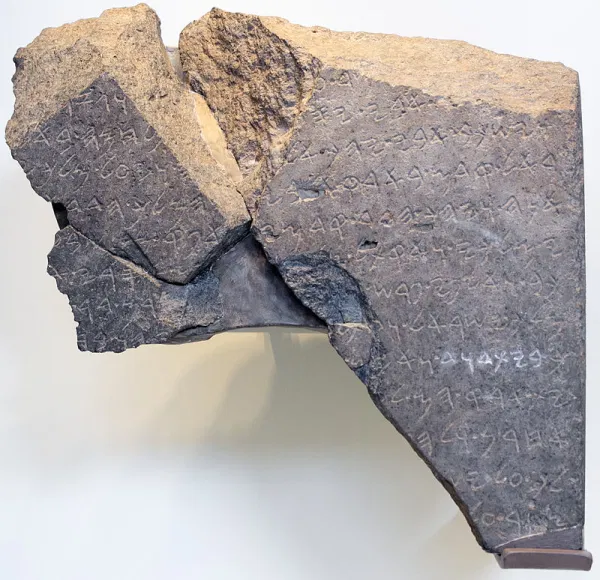 Credit: Wikimedia Commons | Oren Rozen | CC-BY-SA4.0
Credit: Wikimedia Commons | Oren Rozen | CC-BY-SA4.0
The Tel Dan Stele with the “House of David” inscription, testifying to the historicity of David and the reality of his dynasty.
The Tel Dan Stele appears to contradict the biblical account, which clearly states that Jehu killed both Jehoram and Ahaziah (2 Kings 9). How do we explain this discrepancy? It is hardly surprising that Hazael would take credit for the death of his enemies, as it was common in the Ancient Near Eastern for kings to claim credit for the actions of others.17 Todd Bolen points out that some scholars interpret the word qtl as “to strike” or “defeat” rather than “to kill.” He notes that it was Hazael who originally wounded Joram in battle, which is why he was recovering at Jezreel when Jehu came to kill him (2 Kings 8:29). Thus, Hazael could claim to have defeated him, as the fact that Joram never recovered from his wounds would have “provided Hazael with justification for taking credit for the king’s death.” 18 Others have tried to suggest that perhaps Jehu was allied with Hazael, which caused him to take credit for the deaths of the kings of Israel and Judah. However, the biblical text is clear that Jehu and Hazael were foes, and the Assyrian inscriptions clearly state that Jehu was allied with Shalmaneser III.
Summary
Assyrian records affirm the historicity of King Jehu, and confirm that he was the successor to King Omri’s dynasty, as described in Scripture. Moreover, they provide important background information that helps us understand the world in which Jehu came to power. Archaeology is an important tool that often affirms and illuminates details in the biblical text.
Endnotes
1 Ewin R. Thiele, The Mysterious Numbers of the Hebrew Kings. (Grand Rapids: Zondervan Publishing House, 1983), 118.
2 Norma Franklin, “Samaria: from the Bedrock to the Omride Palace,” Levant 36, 2004, pg. 189, 201. Online: file:///C:/Users/Owner/Downloads/samariabedrockLevant.pdf (Accessed Oct. 7, 2020).
3 Norma Franklin, Personal email to the author. Oct. 8, 2020.
4 Bryan Windle, “Desecrated Gate Shrine Discovered at Tel Lachish.” Associates for Biblical Research. Oct. 4, 2016. https://biblearchaeology.org/current-events-list/3503-desecrated-gateshrine-discovered-at-tel-lachish (Accessed Oct. 8, 2020).
5 Albert Kirk Grayson, Assyrian Rulers of the Early First Millennium BC: II (858-745 BC).
(Toronto:University of Toronto Press, 1996), 50.
6 Ibid, 54.
7 Ibid, 48.
8 James B. Pritchard, Ancient Near Easter Texts Relating to the Old Testament, (New Jersey: Princeton University Press, 1969), 280.
9 Albert Kirk Grayson, Assyrian Rulers of the Early First Millennium BC: II (858-745 BC). (Toronto: University of Toronto Press, 1996), 60.
10 Daniel David Luckenbill, Ancient Records of Assyria and Babylonia. (Chicago: University of Chicago
Press, 1926), 200.
11 Ibid, 211.
12 Bryant G. Wood, “Israelite Kings in Assyrian Inscriptions.” Associates for Biblical Research. May 22, 2012. https://biblearchaeology.org/research/chronological-categories/divided-monarchy/3993-israelite-kings-in-assyrian-inscriptions (Accessed Oct. 5, 2020).
13 Randall Price and H. Wayne House, Zondervan Handbook of Biblical Archaeology (Grand Rapids: Zondervan, 2017), 135.
14 James B. Pritchard, Ancient Near Easter Texts Relating to the Old Testament, (New Jersey: Princeton University Press, 1969), 280.
15 K. A. Kitchen, On The Reliability of the Old Testament. (Grand Rapids: Wm. B. Eerdmans Publishing Co., 2006), 36.
16 Ibid, 37.
17 Ibid, 37.
18 Todd Bolen, “The Aramean Oppression of Israel in the Reign of Jehu,” PhD diss., (Dallas Theological Seminary, 2013), 56. https://www.academia.edu/6097624/The_Aramean_Oppression_of_Israel_in_the_Reign_of_Jehu (Accessed Oct. 9, 2020).







